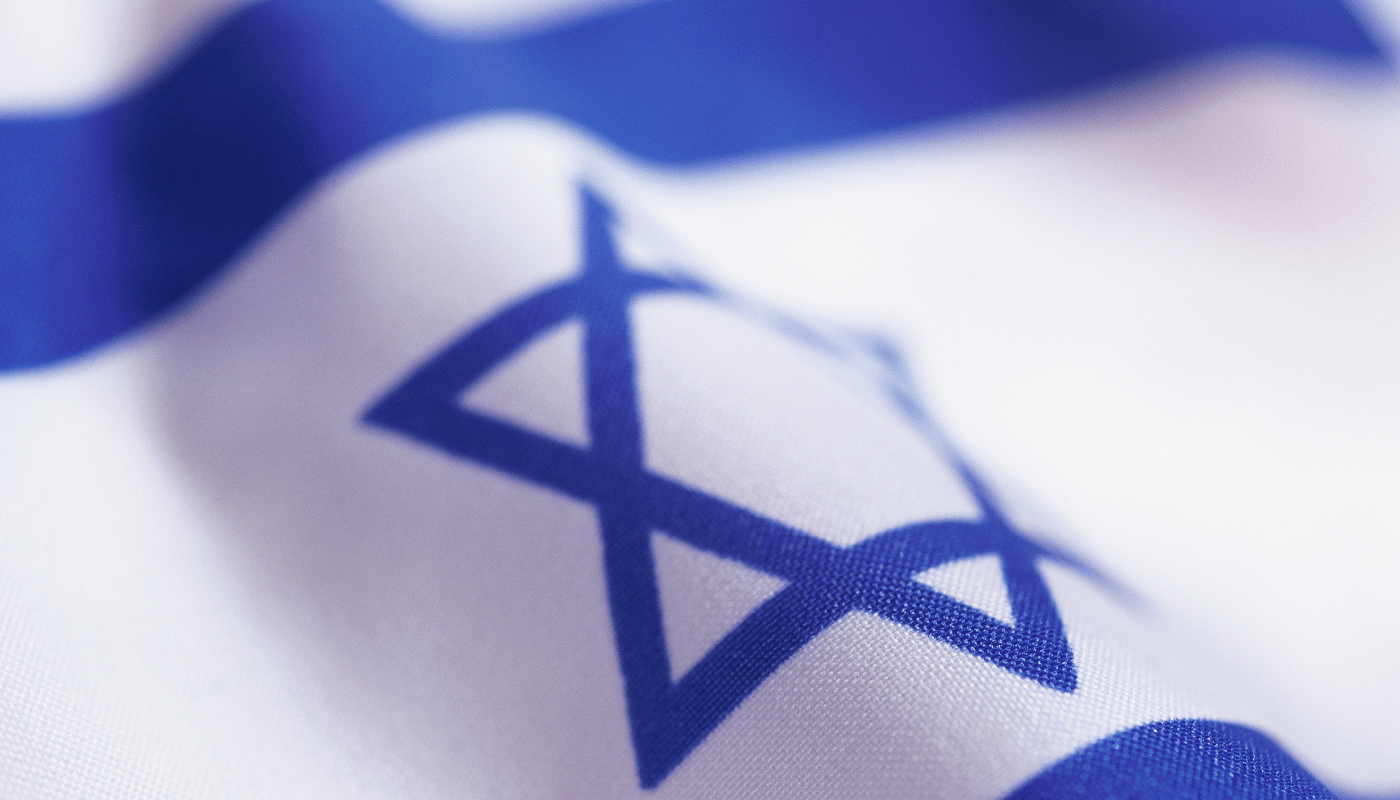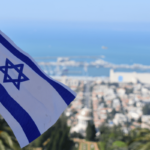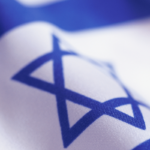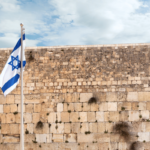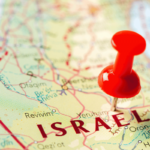Israel, a country steeped in history and cultural diversity, boasts a linguistic landscape as complex and intriguing as its past. But what language binds this multifaceted nation together? This article delves into the linguistic heartbeat of Israel, exploring not just the dominant language spoken but also the symphony of dialects and languages that echo through its streets and valleys. Join us as we unravel the linguistic tapestry of Israel, revealing insights that might surprise you.
Official Language of Israel
The State of Israel, a country with a rich historical tapestry and a melting pot of cultures, primarily communicates in Hebrew. Hebrew, an ancient language that has seen a remarkable revitalization in modern times, is not just a means of communication but a significant element of Jewish identity and heritage. Although the country is home to a diverse population that speaks multiple languages, Hebrew stands out as the official language and is used in government, media, education, and daily life.
Alongside Hebrew, Arabic also holds a special status in Israel. It is used widely by the Arab minority, comprising about 20% of the nation’s population. Arabic, like Hebrew, is deeply embedded in the country’s cultural and social fabric, reflecting Israel’s complex demographic makeup. The coexistence of Hebrew and Arabic underscores the multifaceted linguistic landscape of Israel, where languages serve as bridges between its varied communities.
In addition to Hebrew and Arabic, English is also prominent within Israeli society. It is extensively taught in schools as a second language and is widely used in business, tourism, and international relations. This trilingual proficiency enables Israelis to engage with a global audience, thereby facilitating international collaboration and cultural exchange. Other languages spoken by various immigrant communities, such as Russian, Amharic, and Yiddish, further enrich the country’s linguistic diversity, making Israel a truly multilingual nation.
- Hebrew: Official language and symbol of Jewish identity
- Arabic: Recognized special status, reflecting Israel’s demographic diversity
- English: Widely used in education, business, and international communication
- Russian: Spoken by a significant number of immigrants from the former Soviet Union
- Amharic and Yiddish: Reflect the linguistic heritage of Ethiopian and Eastern European Jewish communities
Additional Insights into Israel’s Linguistic Landscape
Exploring what language Israel uses offers a window into the nation’s soul, revealing a society that is at once ancient and modern. Hebrew’s revival from a biblical to a living, breathing language is unparalleled in linguistic history, symbolizing the indomitable spirit of the Jewish people. Arabic’s prominence within Israel not only acknowledges the country’s geographical location but also its commitment to accommodating its diverse population. The widespread use of English and other languages illustrates Israel’s openness to the world and its diaspora’s diverse origins. Ultimately, the languages spoken in Israel are more than just tools for communication; they are the bearers of culture, history, and identity.
Exploring the Linguistic Diversity of Israel
Israel stands as a vibrant mosaic of cultures and languages, reflecting its complex history and the diverse origins of its population. At the heart of this linguistic tapestry is Hebrew, the official language of the state. Revived in the late 19th and early 20th centuries, Hebrew has undergone a remarkable transformation from an ancient liturgical language to a vibrant means of daily communication for the majority of Israel’s citizens. It serves not only as a linguistic thread connecting the Jewish people to their historical roots but also as a dynamic medium of modern literature, media, and education.
Beyond Hebrew, Arabic holds a special place as a recognized language, reflecting the cultural and historical heritage of Israel’s significant Arab minority. Arabic, in its various dialects, is spoken by both Muslim and Christian Arab communities, as well as by Druze, each adding their unique accents and expressions to the rich linguistic landscape of the country. The use of Arabic bridges communities, serving as a conduit for cultural exchange and mutual understanding among Israel’s diverse population.
Moreover, the linguistic panorama of Israel is further enriched by the languages brought by immigrants from over 100 countries. Russian, Amharic, French, English, and Yiddish are among the most spoken languages, each contributing to the polyphonic character of Israeli society. This multilingualism is not only a testament to Israel’s ongoing story of immigration and integration but also poses challenges and opportunities for education, communication, and social cohesion. The presence of multiple languages promotes a dynamic interplay of cultures, yet it also necessitates innovative approaches to language education and policy to ensure inclusivity and mutual understanding.
- Hebrew: The official language and lingua franca of Israel.
- Arabic: Recognized language, widely spoken by the Arab minority.
- Russian: Spoken by a large number of immigrants from the former Soviet Union.
- Amharic: Language of the Ethiopian Jewish community in Israel.
- English: Commonly used in business, tourism, and academia.
- Yiddish: Maintained among certain communities of Ashkenazi Jews.
Historical Linguistic Landscape
The linguistic tapestry of Israel is as rich and complex as its history. From ancient times, the region has been a melting pot of cultures, civilizations, and, by extension, languages. The predominant language, Hebrew, was not always at the forefront of the linguistic landscape. Initially, it served as the liturgical and scholarly language of the Jewish people, with its everyday use diminishing significantly in the years following the Roman exile.
During the Diaspora, a variety of languages came to the fore within Jewish communities, including Aramaic, Yiddish, and Ladino, reflecting the diverse regions in which Jewish people settled. However, the Zionist movement in the late 19th and early 20th centuries marked a turning point, championing the revival of Hebrew as a spoken language. This revival was unprecedented; no other language has been successfully revived in the same way. The modern state of Israel, established in 1948, adopted Hebrew as its official language, alongside Arabic, which reflects the country’s significant Arab population and the broader regional linguistic heritage.
Today, Israel’s linguistic landscape is remarkably diverse, with Hebrew and Arabic being the most spoken languages. However, the influence of global migration and Israel’s international ties mean that English, Russian, Amharic, and French are also commonly heard. This diversity is a testament to the country’s complex history and its role as a crossroads of civilizations.
- Hebrew – the predominant and official language
- Arabic – significant for the Arab population
- English – widely understood and spoken
- Russian – reflecting the large immigrant population
- Amharic and French – indicative of recent migration trends
Additional Insights into the Historical Linguistic Landscape
The revival of Hebrew is particularly noteworthy. It transitioned from a language of ancient texts to the vibrant vernacular of a modern state, an achievement orchestrated by key figures such as Eliezer Ben-Yehuda. This linguistic resurrection paralleled the physical and political rebirth of Israel, intertwining language with national identity. Moreover, the co-official status of Arabic in Israel underscores the nation’s multicultural and multiethnic composition, while the presence of languages such as Russian and Amharic highlights the ongoing impact of immigration on the societal fabric. This linguistic evolution continues to shape Israel’s identity, reflecting its past and navigating its future.
Understanding Israel’s historical linguistic landscape offers a window into the broader socio-political and cultural currents that have shaped the nation. It’s a narrative of loss, revival, and coexistence, played out through the languages spoken by its people. The commitment to reviving Hebrew demonstrates the power of language in nation-building, while the variety of languages spoken today speaks to Israel’s role as a meeting point of cultures.
Minority Languages in Israel
Israel, a country at the crossroads of continents and civilizations, is a melting pot of cultures and languages. While Hebrew stands as the official language, the linguistic landscape of Israel is enriched by the presence of several minority languages that reflect its complex demographic tapestry. Among these, Arabic holds a significant place as it is not only spoken by the Arab minority but also recognized as having a special status, ensuring its presence in public life and institutions. However, the linguistic mosaic of Israel extends beyond Hebrew and Arabic, unveiling a rich tapestry of languages that contribute to the country’s cultural diversity.
The Russian language, for instance, marks its presence strongly due to the large waves of immigration from the former Soviet Union in the 1990s. It has become a common language in certain areas, influencing local media and cultural events. Similarly, Amharic and other Ethiopian languages are spoken within the Ethiopian Jewish community, preserving their heritage and traditions within the Israeli social fabric. The presence of these languages highlights the varied origins of Israel’s population and the stories of migration that have shaped the country.
Moreover, Yiddish and Ladino, languages of the Ashkenazi and Sephardi Jewish diasporas, respectively, hold a special place in the hearts of many Israelis. These languages, although not as widely spoken as they once were, are an integral part of Jewish history and are cherished by communities working to keep them alive. Other minority languages include French, spoken by immigrants from France and Francophone countries, and English, which, while not an official language, plays a significant role in Israeli society due to global connectivity and the substantial English-speaking immigrant population.
- Arabic
- Russian
- Amharic
- Yiddish
- Ladino
- French
- English
The diversity of languages spoken in Israel is a testament to the country’s rich cultural tapestry and the various waves of migration that have contributed to its demographic landscape. This linguistic diversity not only enriches the cultural experience within Israel but also poses challenges and opportunities in terms of integration, education, and preserving the heritage of its various communities. Understanding and embracing this diversity is key to appreciating the full scope of Israel’s identity as a nation that is both ancient and modern, unified yet incredibly diverse.
Hebrew: A Revival Story
The revival of Hebrew is one of the most extraordinary linguistic phenomena of modern times. Once primarily a liturgical language confined to religious texts and rituals, Hebrew has been transformed into the vibrant, living language of the Israeli people. This transformation is largely attributed to the visionary efforts of Eliezer Ben-Yehuda, who is often hailed as the father of modern Hebrew. Ben-Yehuda’s relentless commitment to reviving Hebrew for daily use among Jews in the late 19th and early 20th centuries laid the foundation for its resurgence as a spoken language.
Today, Hebrew is not only the official language of Israel but also a symbol of Jewish identity and culture. The language’s revival has enabled the creation of a unified means of communication for Jews of diverse backgrounds converging in Israel, facilitating the amalgamation of a national identity. Moreover, the modern Hebrew language continues to evolve, incorporating new terms and expressions to accommodate technological advancements and contemporary life.
The success story of Hebrew’s revival provides a compelling testament to the power of linguistic and cultural determination. It underscores the ability of a language to unite people, encapsulate history, and adapt to the changing dynamics of society.
Key Figures in the Hebrew Revival Movement
| Name | Contribution | Period |
|---|---|---|
| Eliezer Ben-Yehuda | Revitalized Hebrew for everyday use; created the first modern Hebrew dictionary. | Late 19th – Early 20th Century |
| David Ben-Gurion | Promoted Hebrew as the official language of Israel. | Mid 20th Century |
| Itamar Ben-Avi | First native speaker of modern Hebrew; promoted the language internationally. | Early 20th Century |
| Haim Nahman Bialik | Renowned Hebrew poet; his works contributed to the modern Hebrew literature. | Early 20th Century |
| Henrietta Szold | Established Hebrew language schools and educational frameworks. | Early 20th Century |
English’s Role in Israel
While Hebrew and Arabic are the official languages of Israel, English plays a pivotal role as a global lingua franca, connecting Israel with the international community. In academia, technology, and tourism, English serves as a crucial bridge for communication, collaboration, and innovation. Most Israelis acquire a functional level of English during their schooling, which is further refined by exposure to English media and interactions in various professional and casual contexts.
English is also a key language in the Israeli business sector, with many startups and established companies adopting it as their working language to attract investment and engage with global markets. This bilingual or sometimes trilingual environment showcases the linguistic adaptability of Israelis and facilitates international partnerships, research collaborations, and cultural exchanges. Moreover, the prevalence of English signage and services makes Israel an accessible destination for tourists and expatriates alike.
In higher education, numerous programs are offered entirely in English to attract international students, enhancing the country’s reputation as a center for academic excellence. This not only benefits the local economy but also contributes to a vibrant, multicultural academic community. Thus, English is more than just a foreign language in Israel; it is a strategic asset that fosters global connections and opens doors to diverse opportunities.
Deepening the Understanding of English in Israeli Society
A Closer Look at English in Education and Professional Sectors
Exploring the role of English further, its importance in education and professional sectors cannot be overstated. English proficiency is often a prerequisite for higher education and is a valuable skill in the competitive job market, underscoring its integral role in shaping the future of Israeli society.
| Sector | Role of English | Impact |
|---|---|---|
| Education | Medium of instruction in various programs | Attracts international students |
| Technology | Primary language for startups and R&D | Facilitates global partnerships |
| Tourism | Widely used in services and attractions | Enhances visitor experience |
| Business | Key in international trade and negotiations | Expands market reach |
| Media | Access to global news and entertainment | Increases cultural awareness |
In conclusion, English holds a distinctive and multifaceted role in Israel, permeating various sectors of society and serving as a cornerstone for international engagement. Its influence on education, business, and cultural exchange exemplifies the dynamic interplay between language and globalization, highlighting the adaptability and forward-looking orientation of Israeli society.
